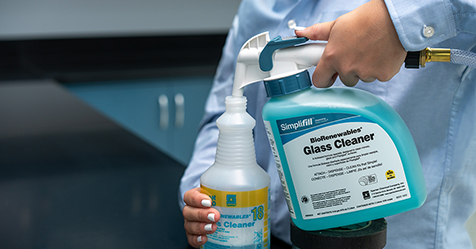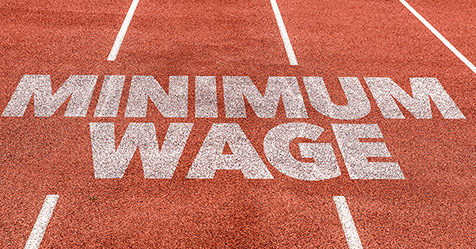What OSHA’s COVID-19 Vaccine Mandate Regulations Mean to the Cleaning Industry
Learn the details before the January 4 vaccination deadline
Late last week, the U.S. Department of Labor’s Occupational Safety and Health Administration (OSHA) announced an Emergency Temporary Standard (ETS) to minimize the risk of COVID-19 transmission in the workplace. The ETS establishes binding requirements to protect employees of large employers from the risk of contracting COVID-19. A summary of the ETS is available on the OSHA website and a fact sheet describing the rule is available on the White House website.
Key points for the cleaning industry
Employers with 100 or more employees must:
Get their employees vaccinated by January 4, 2022 and require unvaccinated employees to produce a negative test on at least a weekly basis: All covered employers must ensure that their employees have received the necessary shots to be fully vaccinated–either two doses of Pfizer or Moderna, or one dose of Johnson & Johnson–by January 4. After that, all covered employers must ensure that any employees who have not received the necessary shots begin producing a verified negative test to their employer on at least a weekly basis, and they must remove from the workplace any employee who receives a positive COVID-19 test or is diagnosed with COVID-19 by a licensed health care provider. The ETS lays out the tests that comply with the standard. The ETS does not require employers to provide or pay for tests. Employers may be required to pay for testing because of other laws or collective bargaining agreements.
Pay employees for the time it takes to get vaccinated: All covered employers are required to provide four hours of paid time off for their employees to get vaccinated and, if needed, sick leave to recover from any side effects they experience that keep them from working.
Ensure that all unvaccinated employees are masked: All covered employers must ensure that unvaccinated employees wear a face mask while in the workplace.
Other requirements and compliance date: Employers are subject to requirements for reporting and recordkeeping that are spelled out in the OSHA materials available here. While the testing requirement for unvaccinated workers will begin after January 4, 2022, employers must comply with all other requirements, such as providing paid time for employees to get vaccinated and masking for unvaccinated workers, on December 5, 2021.
The Biden administration also released new information on the federal contractor COVID-19 vaccine mandate, setting one deadline across different vaccination requirements. According to the White House, “Employees falling under the ETS, U.S. Centers for Medicare & Medicaid Services (CMS), or federal contractor rules will need to have their final vaccination dose—either their second dose of Pfizer or Moderna, or single dose of Johnson & Johnson—by January 4, 2022.” Nineteen states have filed lawsuits to stop U.S. President Joe Biden’s COVID-19 vaccine mandate for federal contractors, arguing that the requirement violates federal law.
Other items of note:
- “This ETS preempts states, and political subdivisions of states, from adopting and enforcing workplace requirements relating to the occupational safety and health issues of vaccination, wearing face coverings, and testing for COVID-19, except under the authority of a federally-approved state plan.”
- “The ETS requires employers to provide employees the following in a language and at a literacy level the employees understand: (1) information about the requirements of the ETS and workplace policies and procedures established to implement the ETS; (2) the CDC document “Key Things to Know About COVID-19 Vaccines”; (3) information about protections against retaliation and discrimination; and (4) information about laws that provide for criminal penalties for knowingly supplying false statements or documentation.”
- “In determining the number of employees, employers must include all employees across all of their U.S. workplaces, regardless of employees’ vaccination status or where they perform their work. For example, if an employer has 150 employees, and 100 of them perform maintenance work in customers’ homes, primarily working from their company vehicles (i.e., mobile workplaces), and rarely or never report to the main office, that employer would fall within the scope of the standard.” Part-time, seasonal, and temporary workers are all included towards the 100 threshold and the requirements of ETS. Independent contractors do not count towards the threshold.
- Employers are required to report COVID-19 fatalities and hospitalizations to OSHA.
- These are minimum standards. Employers can establish additional measures.
- There is an exemption from the ETS for workers who perform work exclusively outdoors and those that work from home exclusively.
- If a testing option is chosen it is up to the employer to decide who pays for the testing.
- Penalties for non-compliance start at US$13,653 per violation. OSHA can, however, fine businesses ten times that amount for actions considered willful or repeated.


